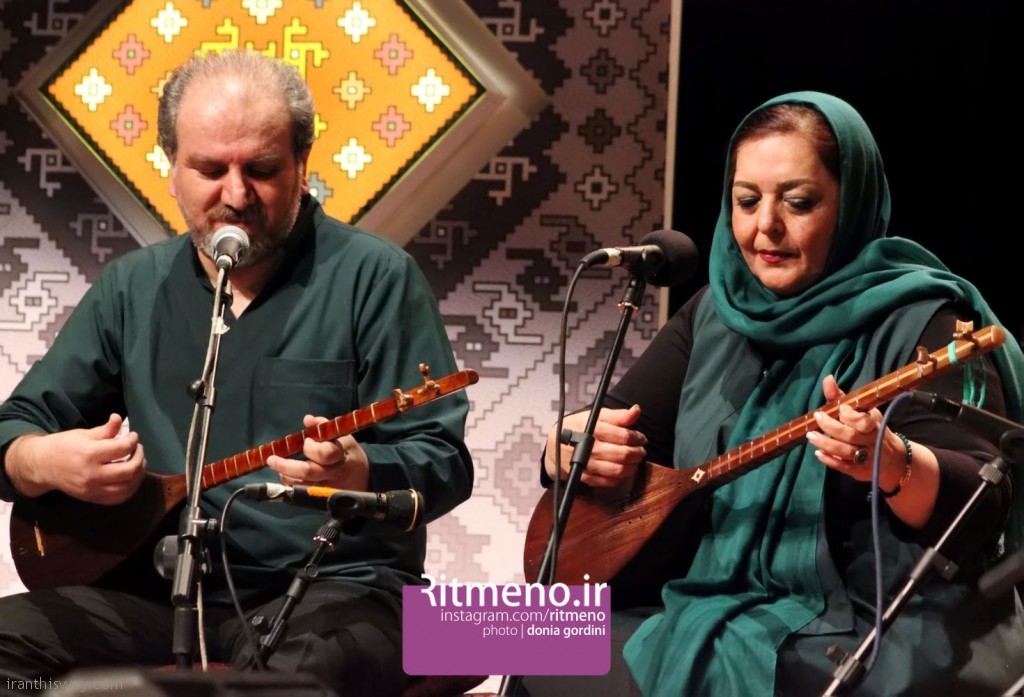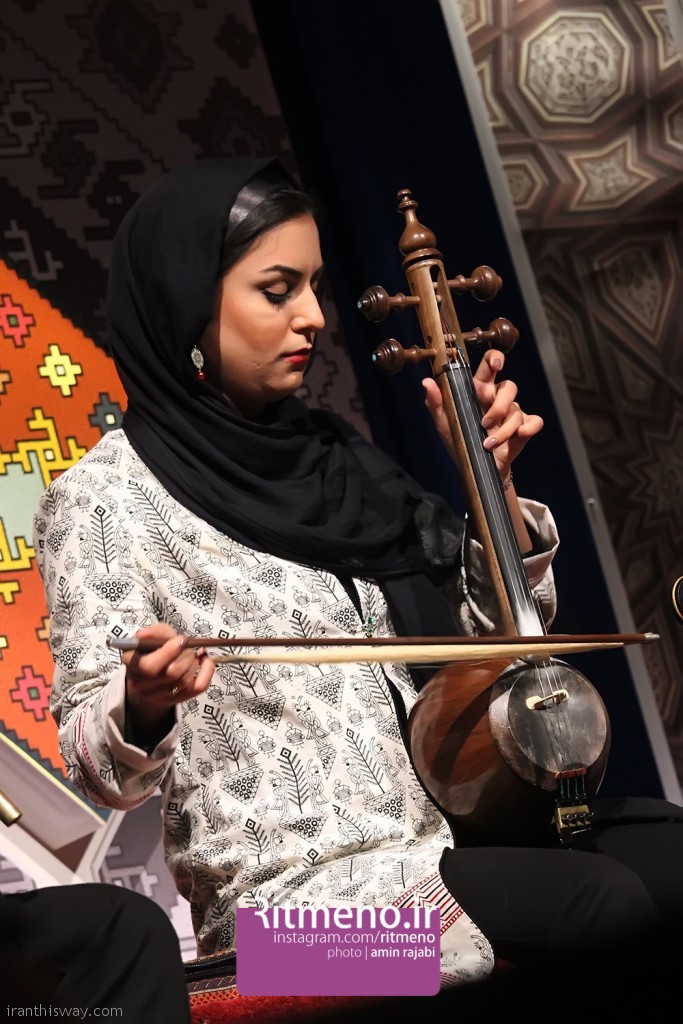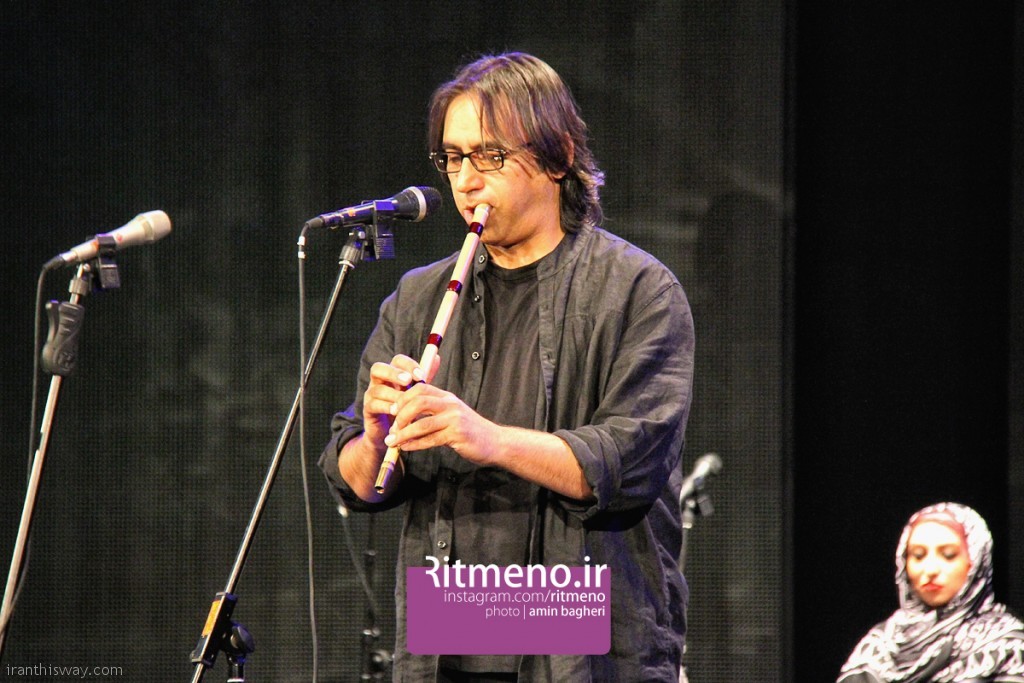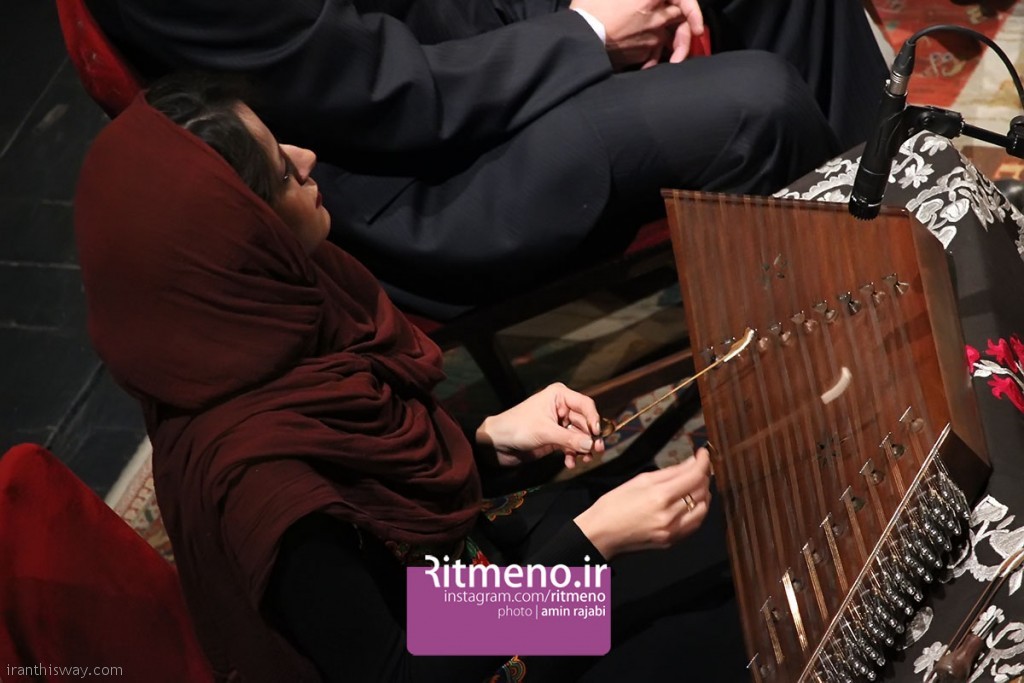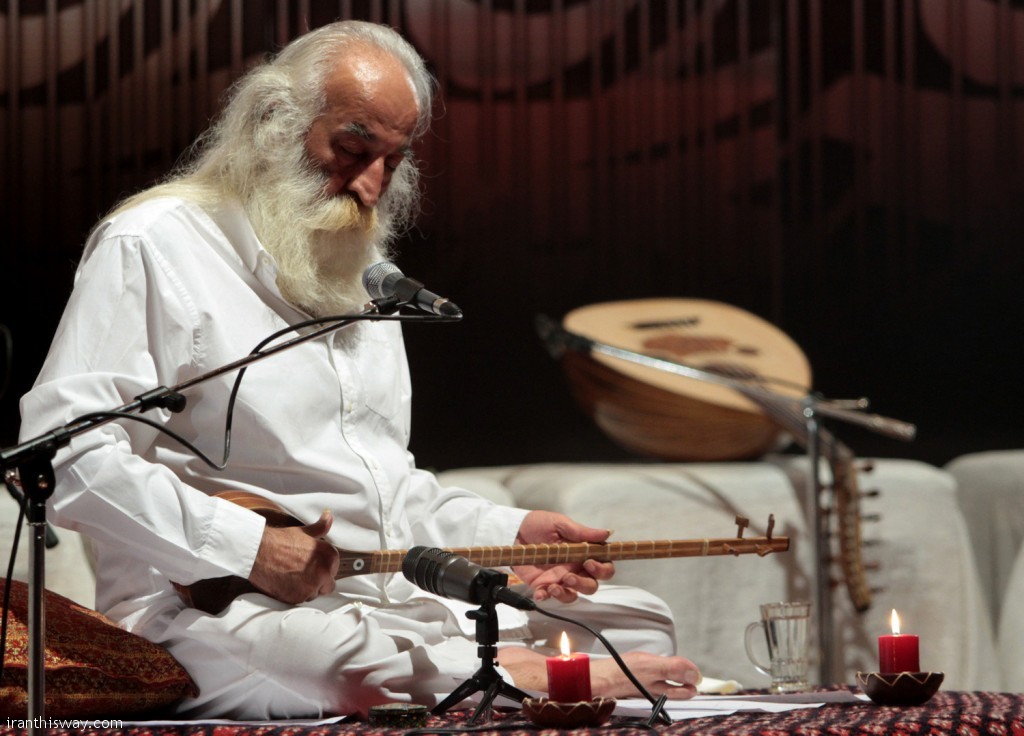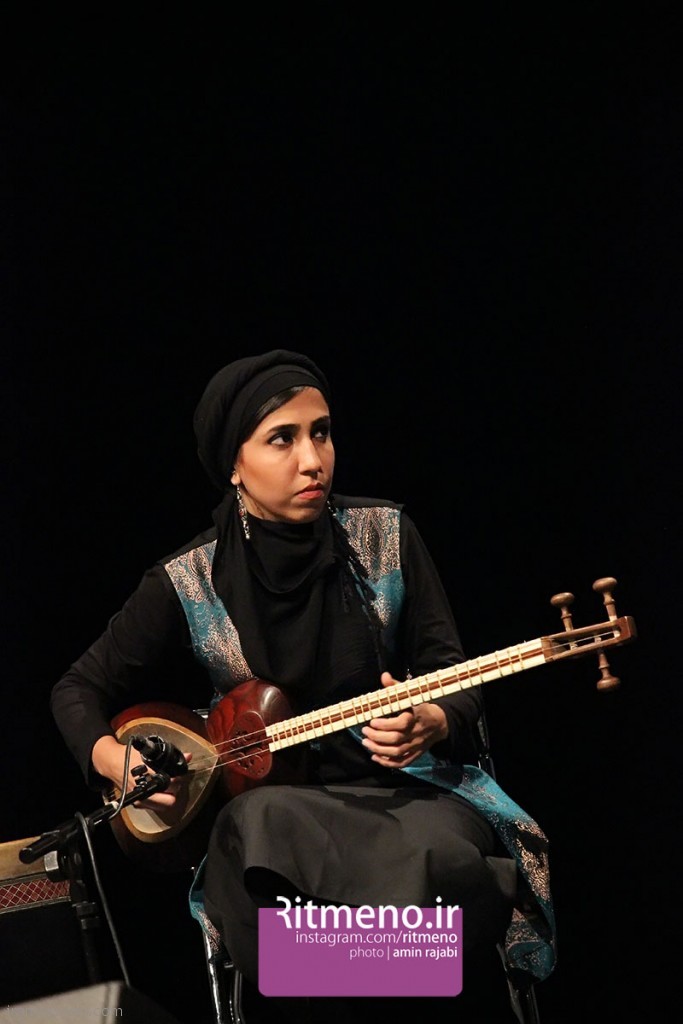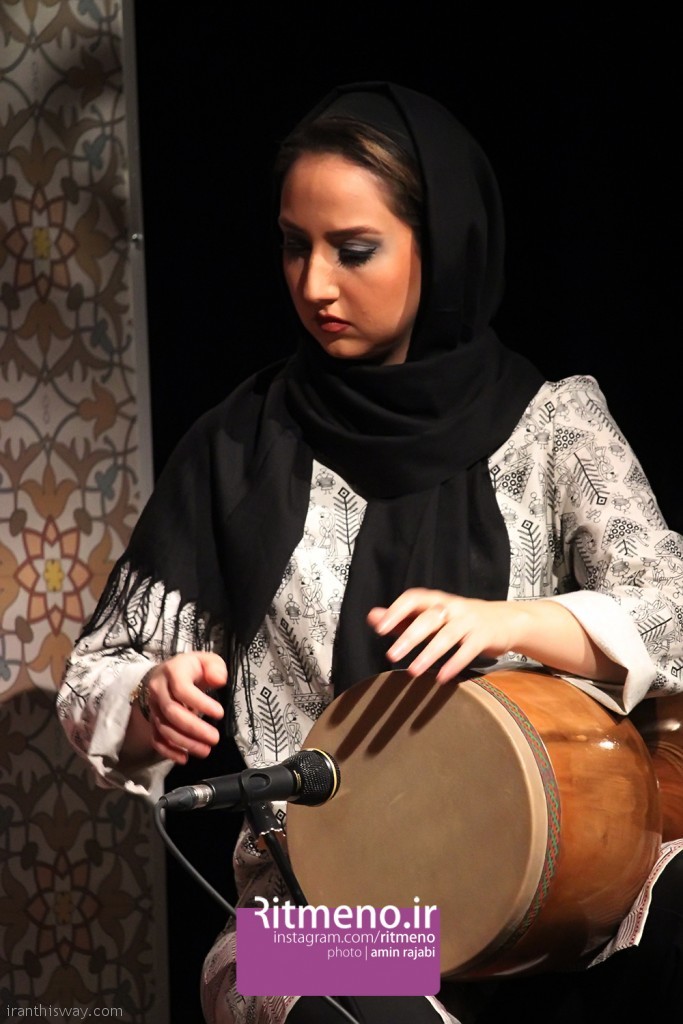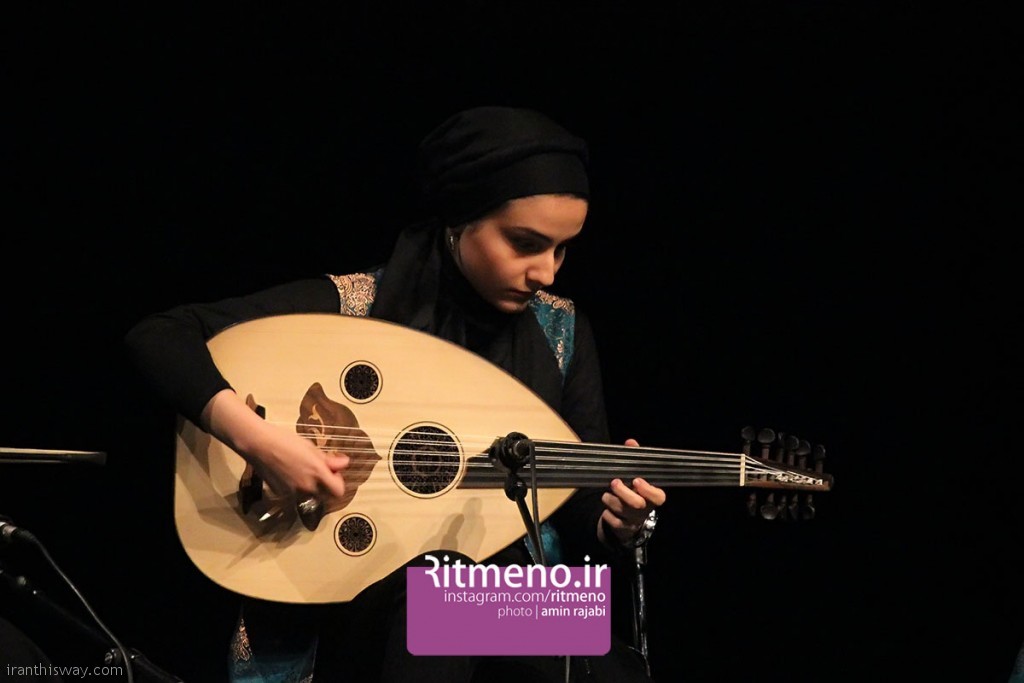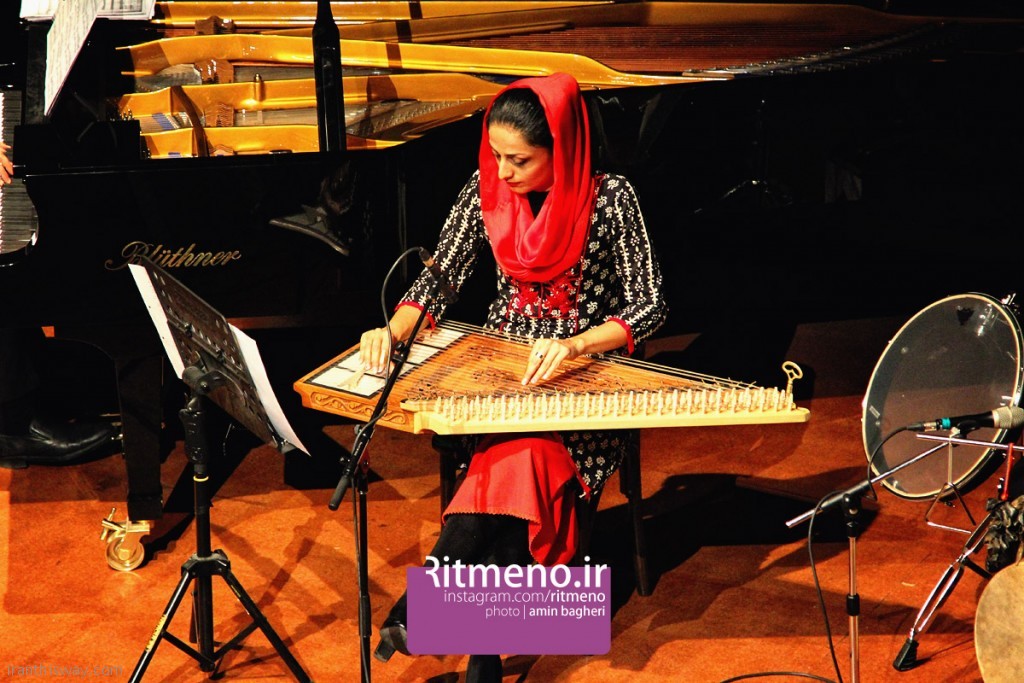Daf
Daf is one of the most ancient frame drums in Asia and North Africa. As a Persian instrument, in 20th century, it is considered as a Sufi instrument to be played in Khanghah-s for Zikr music but now this percussion instrument has recently become very popular and it has been integrated into Persian art music successfully.
Dotar
The dotar (literally in Persian meaning “two strings”), and it comes from a family of long-necked lutes and can be found throughout Central Asia, the Middle East and as far as the North East of China in Xinjiang too.
In Iran, the dotar is played mainly in the north and the east of Khorasan as well as among the Turkmen of Gorgan and Gonbad. The instrument remains the same but its dimensions and the number of its ligatures vary slightly from region to region. Two types of wood are used in the fabrication of the dotar.
The pear-shaped body is carved out of a single block of mulberry wood. Its neck is made of either the wood of the apricot or the walnut tree. It has two steel strings, which in the past were made of silk or animal entrails. The dotar is tuned in fourth or fifth intervals.
Kamanche
The kamanche is a bowed spike fiddle. The instrument has four metal strings, and the body consists of a wooden hemisphere coverred with thin sheepskin membrane. Oddly, the instrument’s bridge runs diagonally across this membrane. The instrument is highly ornate and is about the size of a viola. The tuning varies depending upon the region of the country where it is being played. In Tehran, the kamanche is tuned in the same manner as a violin: G, D, A, E. It is suspected that the fourth string was added in the early twentieth century as the result of the introduction of western violin to Iran. The kamancheh has been painted in Persian antique paintings.
Nay
The ney that is the Persian knotgrass reed, has five finger holes in front and one thumbhole in the back. The ney has a range of two and a half octaves. The upper end is covered by a short brass cylinder, which is anchored in the tiny space between the upper incisive of the player. Sound is produced when a stream of air is directed by the tongue toward the opening of the instrument. In this way, sound is produced behind the upper teeth, inside the mouth, which gives the ney a distinct timbre than that of the sound produced by the lips on the outside of the mouth.
Santur
The santur is a struck zither in the form of a shallow, regular trapezoidal box. There are several sound posts inside the box, and two small rosettes on the top panel which help to amplify the sound. The santur has 72 strings, arranged in groups of four, i.e. each of four closely spaced strings are tuned to the same pitch. Each group of four strings is supported by a small,movable, wooden bridge; the bridges are positioned to give the instrument a range of three octaves.
The santoor can be made from various kinds of wood (walnut, rosewood, betel palm, etc.) depending on the desired sound quality. The front and the back of the instrument are connected by sound posts whose positions play an important role in the sound quality of the instrument. Although the santoor is very old, it was neither depicted in miniatures, nor presented in any other medium until the nineteenth century. The secret of making the trapezoid-shape sound box lies in the quality and age of the wood, as well as in the arrangement of the sound posts which connect the table of the instrument to its back. Santoor is played in India, Iraq, Egypt and some other countries.
Setar
The ancestry of the setar can be traced to the ancient tanbur of pre-Islamic Persia. It is made from thin mulberry wood and its fingerboard has twenty-five or twenty-six adjustable gut frets. Setar is literally translated as “three strings”; however, in its present form, it has four strings and it is suspected that setar initially had only three strings. Because of its delicacy and intimate sonority, the setar is the preferred instrument of Sufi mystics.
Two of the strings are made of steel, two are of brass, and they are tuned to c, c semi-sharp, g, and c semi-sharp, respectively. The average setar is 85 cm long, 20 cm wide, and has a 15 cm deep gourd, and is made entirely of wood. (Unlike the tar which has a membrane streched across the body.) Also, unlike the tar, the player plucks the strings with the nail of the index finger, instead of using a plectrum. It is believed that setar is the ancestor of the Indian sitar.
Tar
Tar is a plucked stringed instrument (a long-necked lute) that is played in Iran (Persia), Caucasian countries (like Azerbaijan, Armenia and so on) and central Asia (like Tajikistan). It exists in two forms now, the Persian (that is named Tar-e-Shiraaz or Irani) and Caucasian (that is named Tar-e-Ghafghaaz). The Persian tar is carved from a block of mulberry wood and has a deep, curved body with two bulges shaped like a figure 8. The upper surface is shaped like two hearts of different sizes, joined at the points. The sound box consists of two parts. The small part is called Naghaareh and the large part is called Kaasseh (that means bowl (sound box)). The sound box is covered with lambskin. On the lower skin, a horn bridge supports six metal strings in three courses. The long fingerboard has twenty-two to twenty-eight movable gut frets. The strings are plucked with a brass plectrum coated on one side in wax. Its range is about two and a half octaves. The tunings of the strings are changed according to the dastgah that is being played, and the twenty six frets are movable. Finally, the strings are plucked with a plectrum.
Tonbak
The most popular percussion instrument in Persian music today is a goblet drum known as the Tonbak. The Tonbak is a large wooden instrument with a goatskin head. Unlike other goblet drums, this drum has a much more squared-off shape and produces lower-pitched and softer tones due to its size and skin being put on with less tension. Other names for this drum are Donbak, Tombak, Dombak, Tompak and Zarb. Maybe the name Zarb has its origins in the Arabic word darb, meaning to strike, as mentioned above. The other names have a more interesting origin. The two main strokes played on this drum are known as Ton, for a bass tone played in the center of the drum head, and Bak, for a treble tone played on or near the rim. Combining the terms results in the name Ton-Bak. It is highly likely that the American name Dumbek is derived from one of the Persian names.
Barbat (UD, OUD)
The barbat, in Arabic courtiers and Iran known as the ud, is a short-necked fretless lute with five double-courses of strings and traditionally played with an eagle’s quill. The barbat is the ancestor of the European lute, and functions as a bass instrument. The barbat is the ancestor of the Chinese pipa too. The pipa brought to Japan and was named biwa.
Ghanoon
The ghanoon is the Persian zither. It is a flat trapezoidal wooden box, with twenty-four strings in triple fastened at its rectangular side on one end and to pegs on the oblique side on the other. The player to make slight changes in pitch manipulates small levels lying below each course of strings. The strings are plucked with two horn plectra, one on each index finger.
Listen to Persian Music



